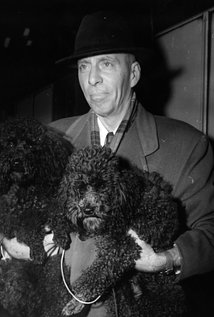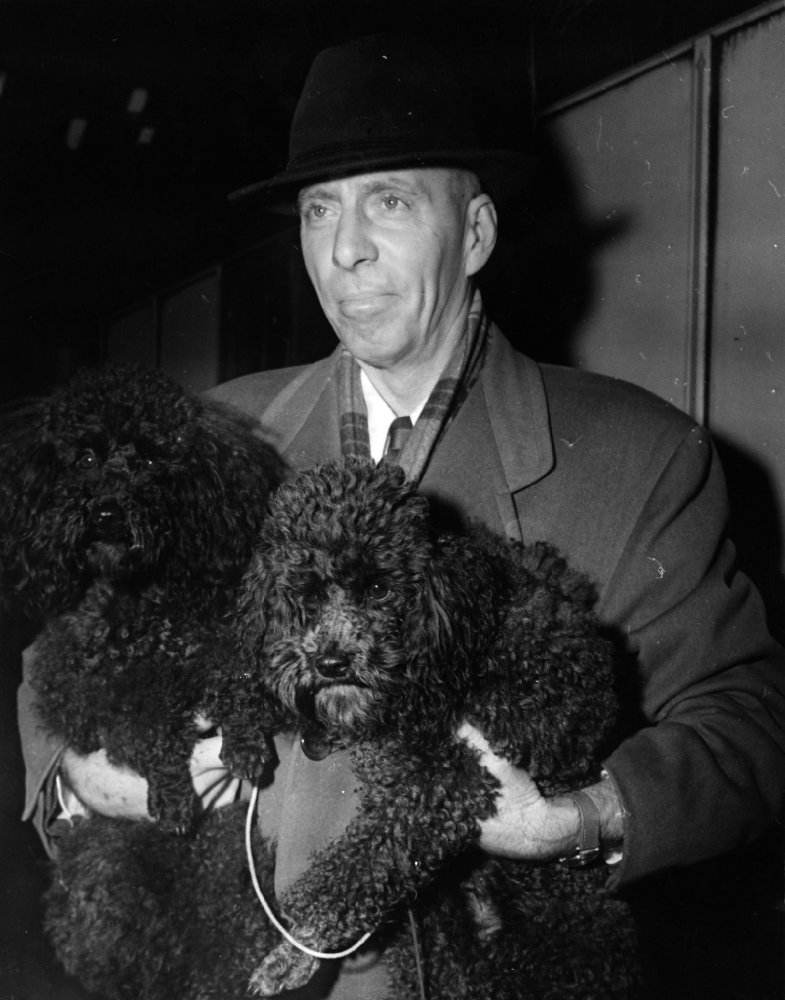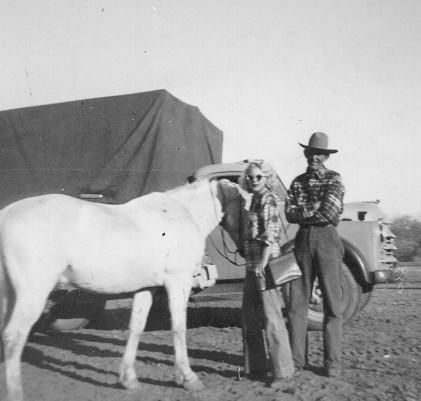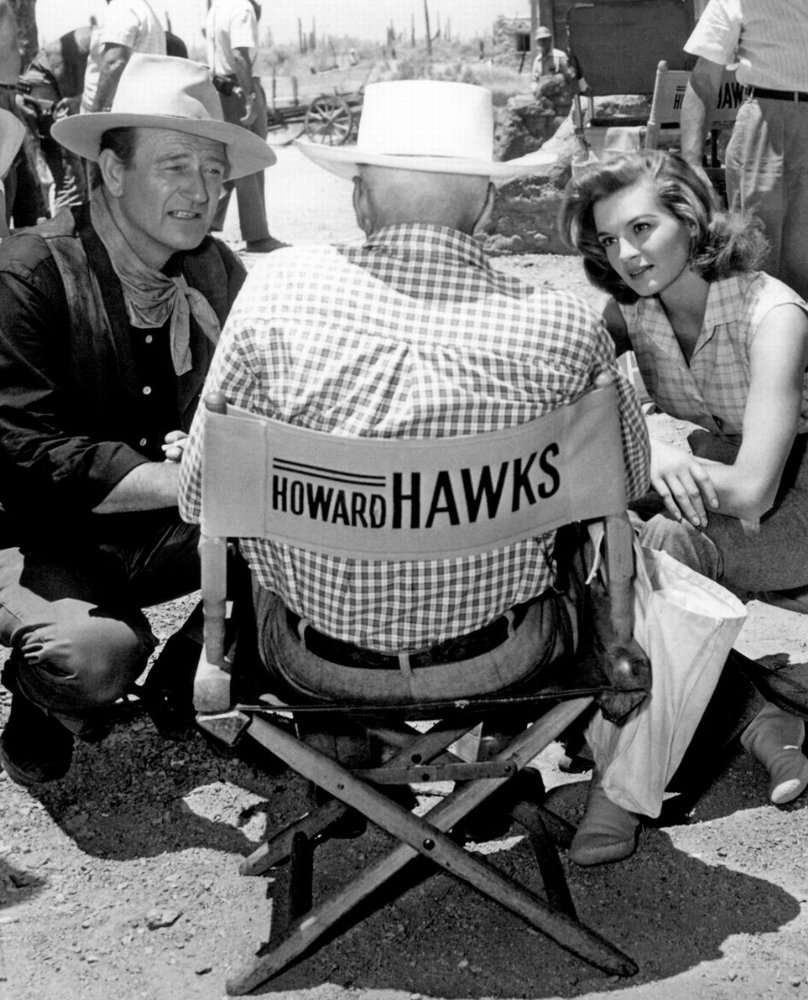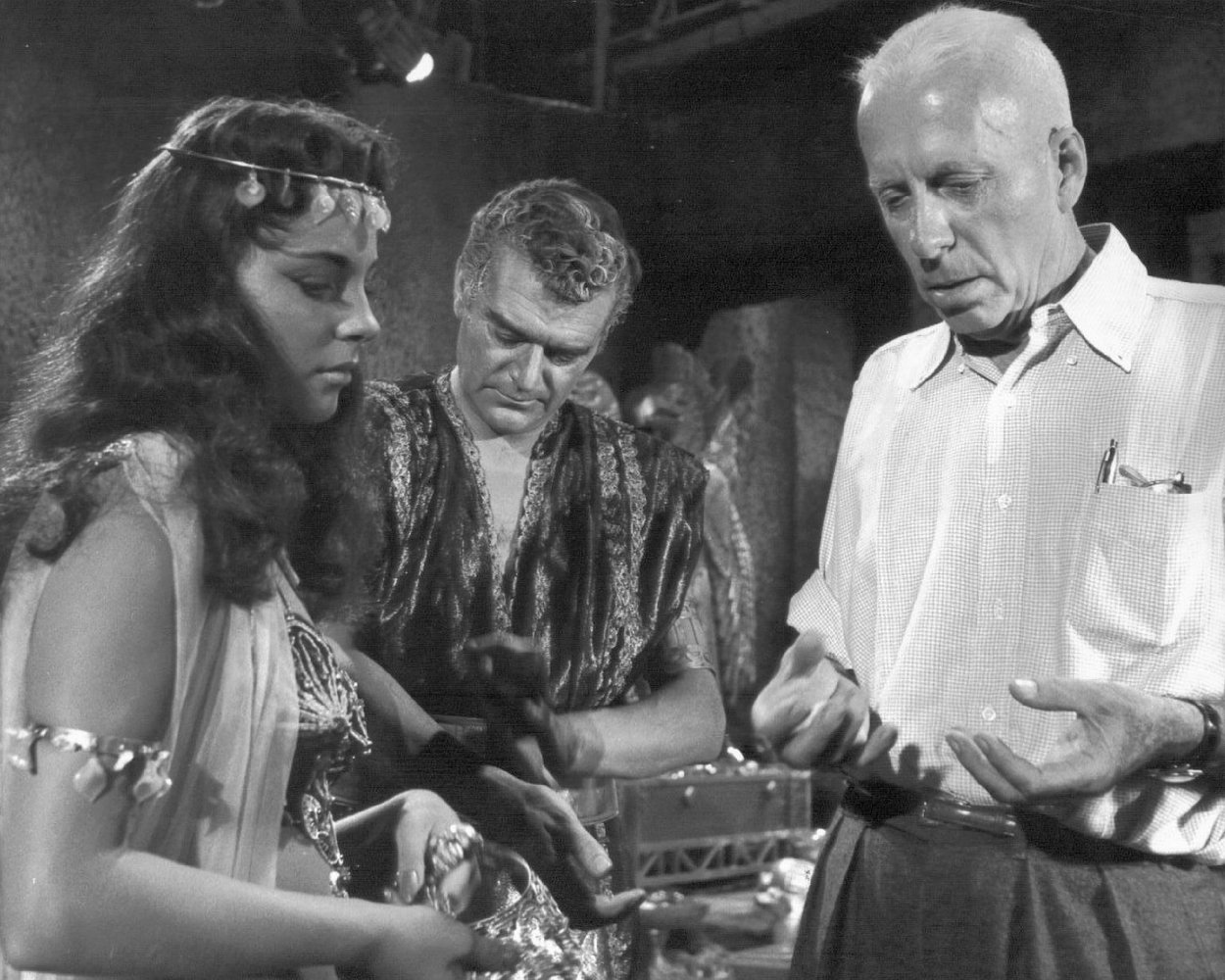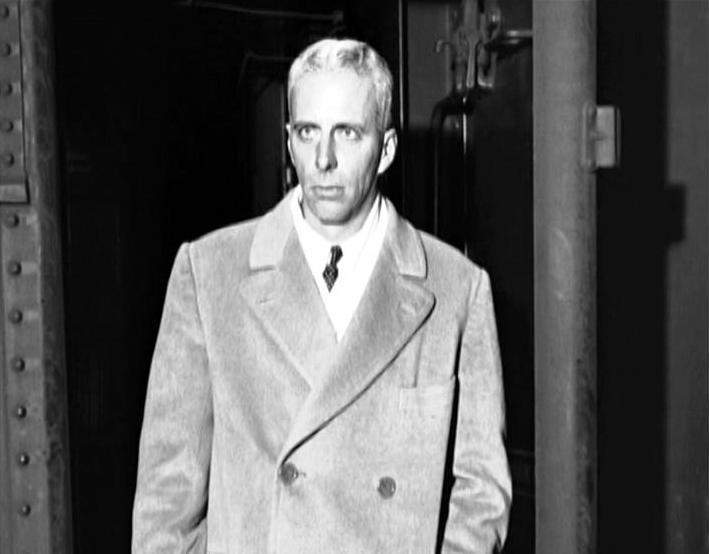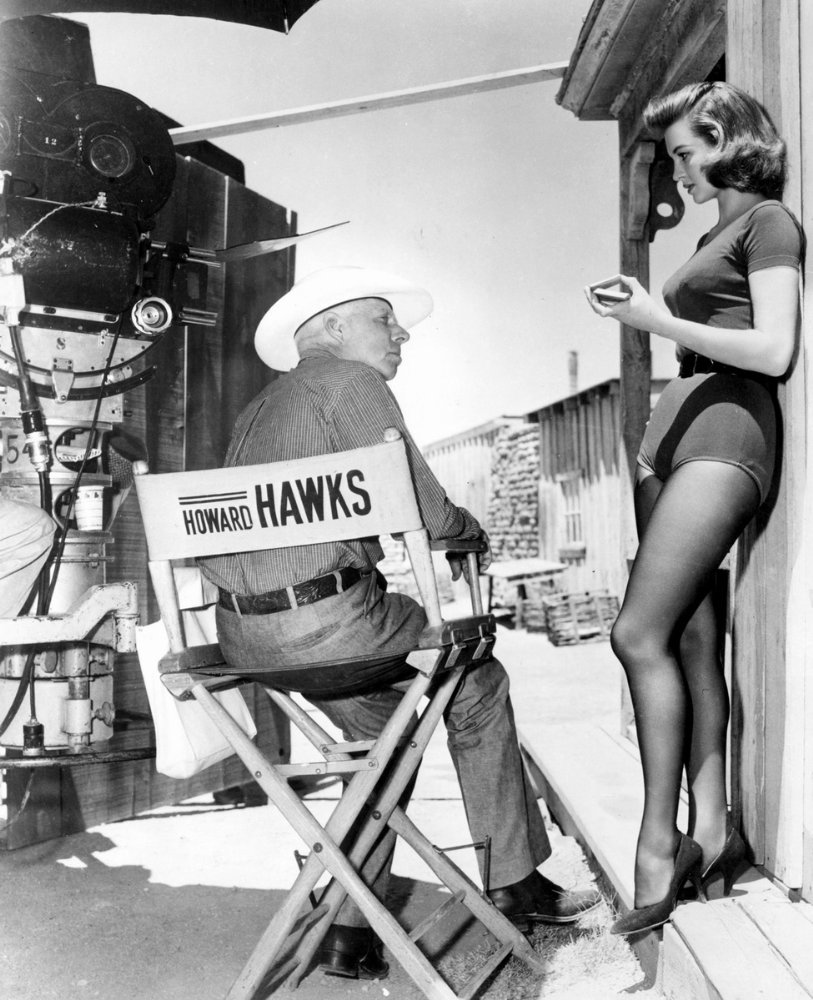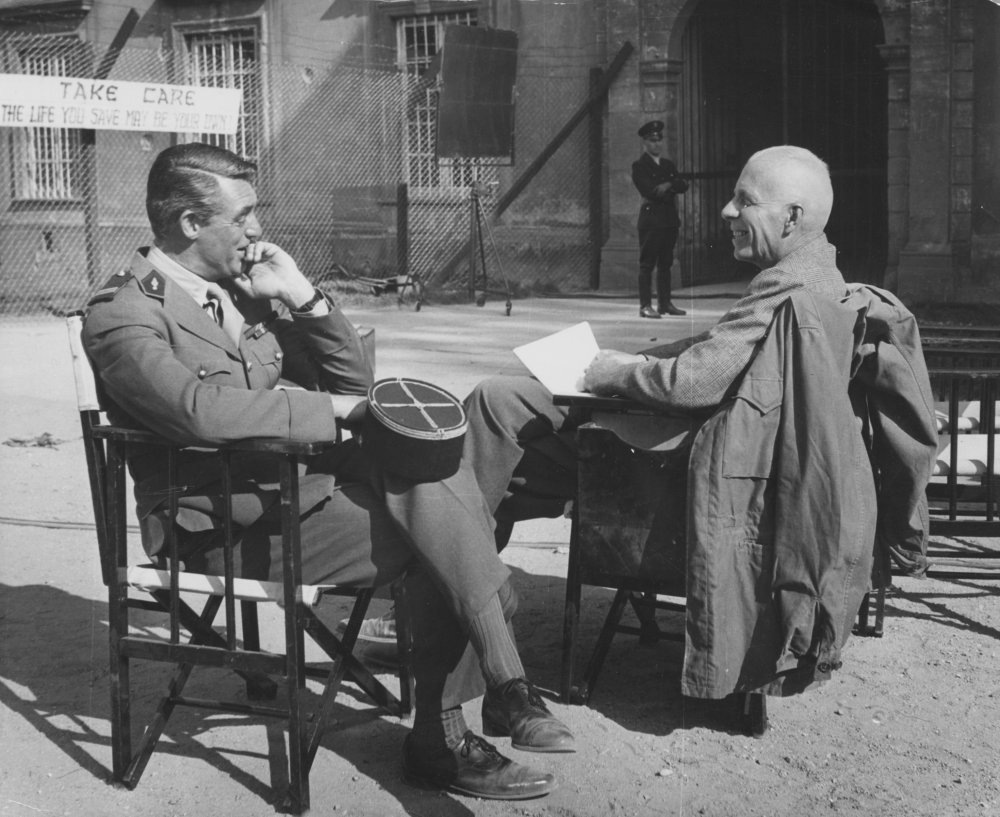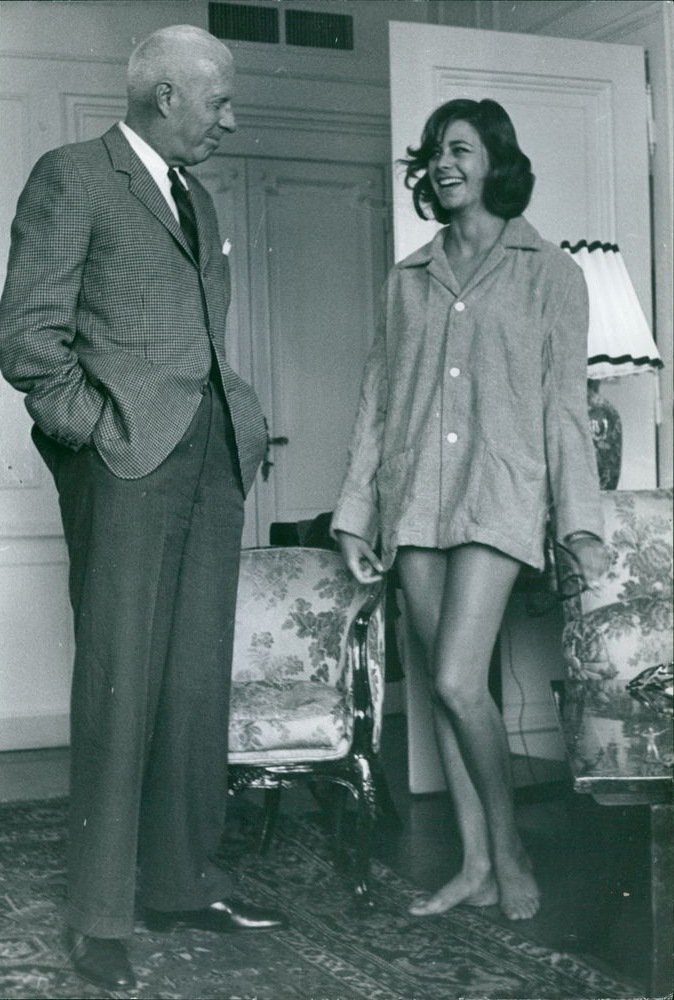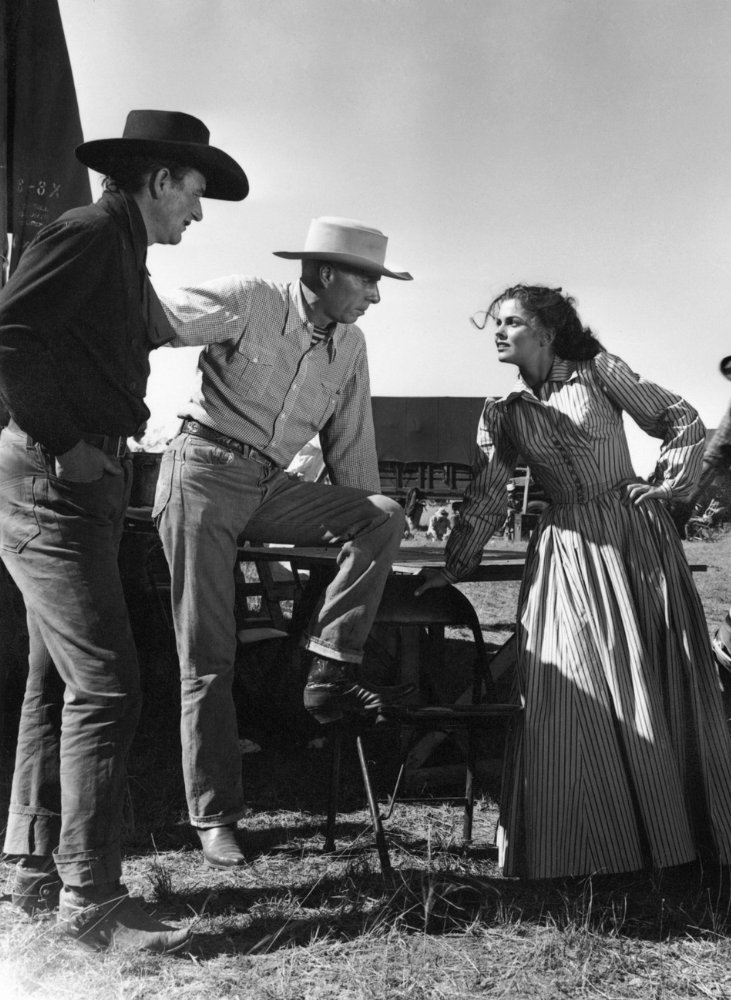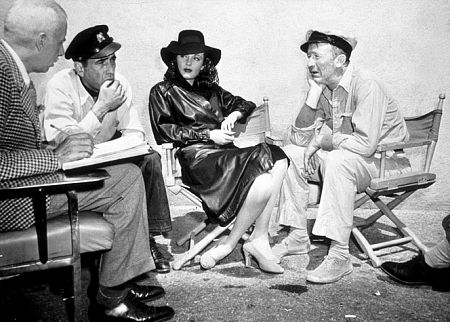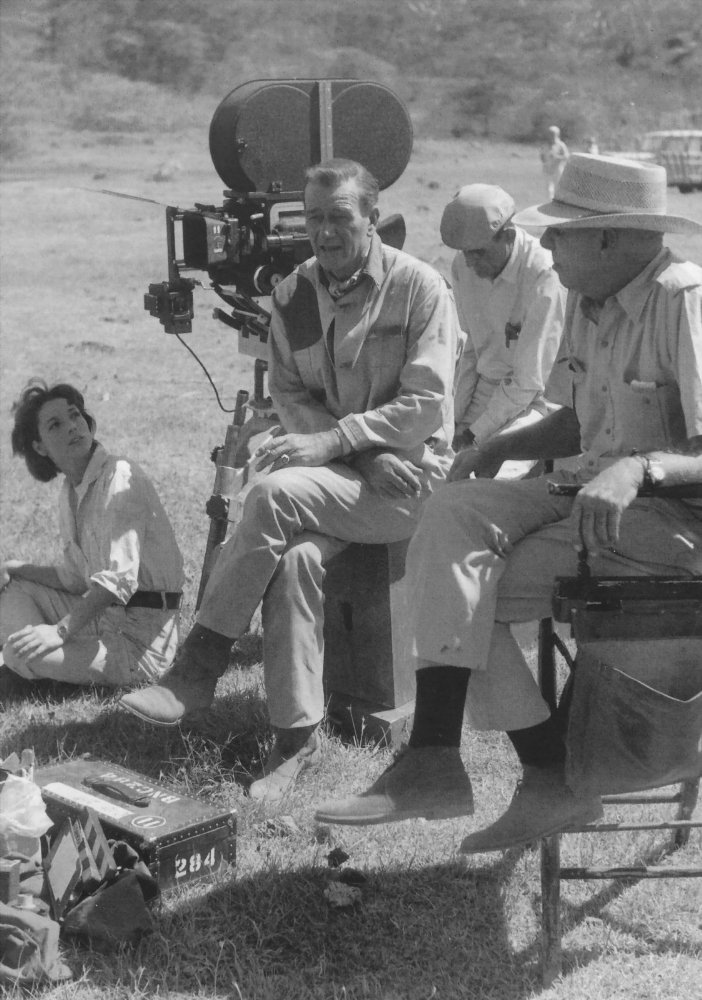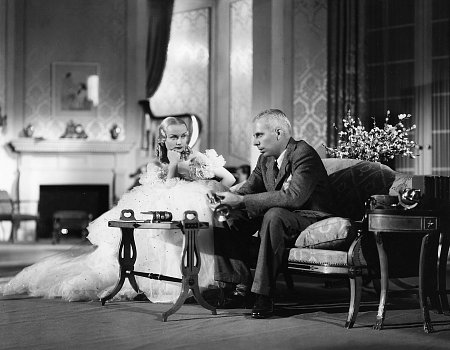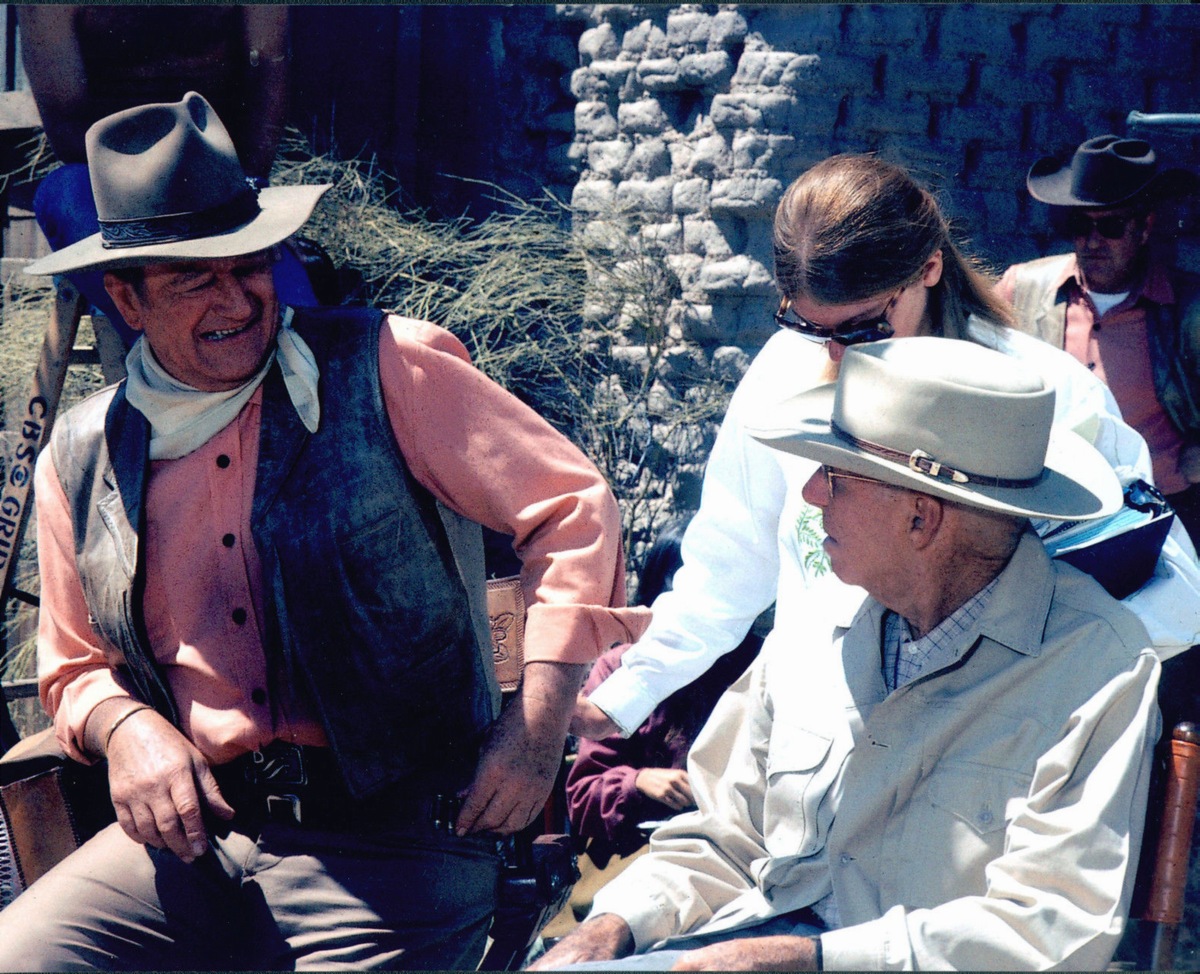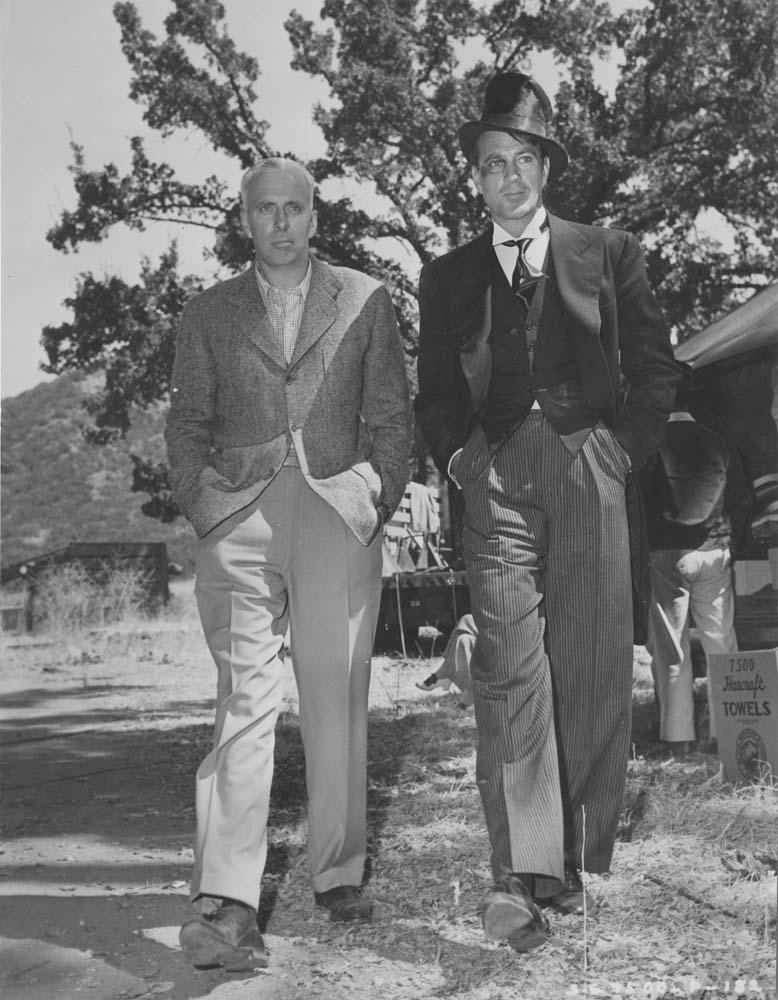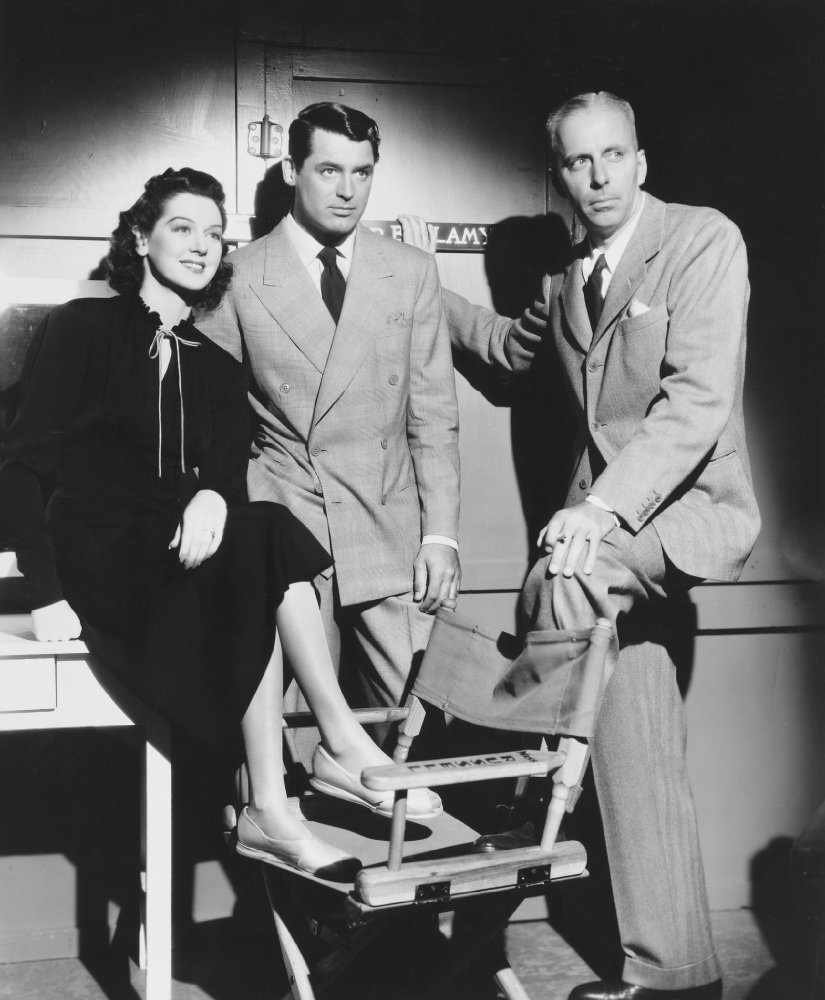What do the classic films Scarface (1932), Twentieth Century (1934), Bringing Up Baby (1938), Only Angels Have Wings (1939), His Girl Friday (1940), Sergeant York (1941), To Have and Have Not (1944), The Big Sleep (1946), Red River (1948) Gentlemen Prefer Blondes (1953) and Rio Bravo (1959) have in common? Aside from their displays of great craftsmanship, the answer is director Howard Hawks, one of the most celebrated of American filmmakers, who ironically, was little celebrated by his peers in the Academy of Motion Picture Arts and Sciences during his career.Although John Ford--his friend, contemporary and the director arguably closest to him in terms of his talent and output--told him that it was he, and not Ford, who should have won the 1941 Best Director Academy Award (for Sergeant York (1941)), the great Hawks never won an Oscar in competition and was nominated for Best Director only that one time, despite making some of the best films in the Hollywood canon. The Academy eventually made up for the oversight in 1974 by voting him an honorary Academy Award, in the midst of a two-decade-long critical revival that has gone on for yet another two decades. To many cineastes, Hawks is one of the faces of American film and would be carved on any film pantheon's Mt. Rushmore honoring America's greatest directors, beside his friend Ford and Orson Welles (the other great director who Ford beat out for the 1941 Oscar). It took the French "Cahiers du Cinema" critics to teach America to appreciate one of its own masters, and it was to the Academy's credit that it recognized the great Hawks in his lifetime.Hawks' career spanned the freewheeling days of the original independents in the 1910s, through the studio system in Hollywood from the silent era through the talkies, lasting into the early 1970s with the death of the studios and the emergence of the director as auteur, the latter a phenomenon that Hawks himself directly influenced. He was the most versatile of American directors, and before his late career critical revival he earned himself a reputation as a first-rate craftsman and consummate Hollywood professional who just happened, in a medium that is an industrial process, to have made some great movies. Recognition as an influential artist would come later, but it would come to him before his death.He was born Howard Winchester Hawks in Goshen, Indiana, on Decoration Day, May 30, 1896, the first child of Frank Winchester Hawks and his wife, the former Helen Howard. The day of his birth the local sheriff killed a brawler at the town saloon; the young Hawks was not born on the wild side of town, though, but with the proverbial silver spoon firmly clenched in his young mouth. His wealthy father was a member of Goshen's most prominent family, owners of the Goshen Milling Co. and many other businesses, and his maternal grandfather was one of Wisconsin's leading industrialists. His father's family had arrived in America in 1630, while his mother's father, C.W. Howard, who was born in Maine in 1845 to parents who emigrated to the U.S. from the Isle of Man, made his fortune in the paper industry with his Howard Paper Co.Ironically, almost a half-year after Howard's birth, the first motion picture was shown in Goshen, just before Christmas on December 10, 1896. Billed as "the scientific wonder of the world," the movie played to a sold-out crowd at the Irwin Theater. However, it disappointed the audience, and attendance fell off at subsequent showings. The interest of the boy raised a Presbyterian would not be piqued again until his family moved to southern California.Before that move came to pass, though, the Hawks family relocated from Goshen to Neenah, Wisconsin, when Howard's father was appointed secretary/treasurer of the Howard Paper Co. in 1898. Howard grew up a coddled and spoiled child in Goshen, but in Neenah he was treated like a young prince. His grandfather C.W. lavished his grandson with expensive toys. C.W. had been an indulgent father, encouraging the independence and adventurousness of his two daughters, Helen and Bernice, who were the first girls in Neenah to drive automobiles. Bernice even went for an airplane ride (the two sisters, Hawks' mother and aunt, likely were the first models for what became known as "the Hawksian women" when he became a director). Brother Kenneth Hawks was born in 1898, and was looked after by young Howard. However, Howard resented the birth of the family's next son, William B. Hawks, in 1902, and offered to sell him to a family friend for ten cents. A sister, Grace, followed William. Childbirth took a heavy toll on Howard's mother, and she never quite recovered after delivering her fifth child, Helen, in 1906. In order to aid her recovery, the family moved to the more salubrious climate of Pasadena, California, northeast of Los Angeles, for the winter of 1906-07. The family returned to Wisconsin for the summers, but by 1910 they permanently resettled in California, as grandfather C.W. himself took to wintering in Pasadena. He eventually sold his paper company and retired. He continued to indulge his grandson Howard, though, buying him whatever he fancied, including a race car when the lad was barely old enough to drive legally. C.W. also arranged for Howard to take flying lessons so he could qualify for a pilot's license, an example followed by Kenneth.The young Howard Hawks grew accustomed to getting what he wanted and believed his grandfather when C.W. told him he was the best and that he could do anything. Howard also likely inherited C.W.'s propensity for telling whopping lies with a straight face, a trait that has bedeviled many film historians ever since. C.W. also was involved in amateur theatrics and Howard's mother Helen was interested in music, though no one in the Hawks-Howard family ever was involved in the arts until Howard went to work in the film industry.Hawks was sent to Philips Exeter Academy in Exeter, New Hampshire, for his education, and upon graduation attended Cornell University, where he majored in mechanical engineering. In both his personal and professional lives Hawks was a risk-taker and enjoyed racing airplanes and automobiles, two sports that he first indulged in his teens with his grandfather's blessing.The Los Angeles area quickly evolved into the center of the American film industry when studios began relocating their production facilities from the New York City area to southern California in the middle of the 1910s. During one summer vacation while Howard was matriculating at Cornell, a friend got him a job as a prop man at Famous Players-Lasky (later to become Paramount Pictures), and he quickly rose trough the ranks. Hawks recalled, "It all started with Douglas Fairbanks, who was off on location for some picture and phoned in to say they wanted a modern set. There was only one art director . . . and he was away on another location. I said, 'Well, I can build a modern set.' I'd had a few years of architectural training at school. So I did, and Fairbanks was pleased with it. We became friends, and that was really the start."During other summer vacations from Cornell, Hawks continued to work in the movies. One story Hawks tells is that the director of a Mary Pickford film Hawks was working on, The Little Princess (1917), became too inebriated to continue working, so Hawks volunteered to direct a few scenes himself. However, it's not known whether his offer was taken up, or whether this was just one more of his tall tales.During World War I Hawks served as a lieutenant in the Signal Corps and later joined the Army Air Corps, serving in France. After the Armistice he indulged in his love of risk, working as an aviator and a professional racing car driver. Drawing on his engineering experience, Hawks designed racing cars, and one of his cars won the Indianapolis 500. These early war and work experiences proved invaluable to the future filmmaker.He eventually decided on a career in Hollywood and was employed in a variety of production jobs, including assistant director, casting director, script supervisor, editor and producer. He and his brother Kenneth shot aerial footage for motion pictures, but Kenneth tragically was killed during a crash while filming. Howard was hired as a screenwriter by Paramount in 1922 and was tasked with writing 40 story lines for new films in 60 days. He bought the rights for works by such established authors as Joseph Conrad and worked, mostly uncredited, on the scripts for approximately 60 films. Hawks wanted to direct, but Paramount refused to indulge his ambition. A Fox executive did, however, and Hawks directed his first film, The Road to Glory (1926) in 1926, also doubling as the screenwriter.Hawks made a name for himself by directing eight silent films in the 1920s, His facility for language helped him to thrive with the dawn of talking pictures, and he really established himself with his first talkie in 1930, the classic World War I aviation drama The Dawn Patrol (1930). His arrival as a major director, however, was marked by 1932's controversial and highly popular gangster picture Scarface (1932), a thinly disguised bio of Chicago gangster Al Capone, which was made for producer Howard Hughes. His first great movie, it catapulted him into the front rank of directors and remained Hawks' favorite film. Unnder the aegis of the eccentric multi-millionaire Hughes, it was the only movie he ever made in which he did not have to deal with studio meddling. It leavened its ultra-violence with comedy in a potent brew that has often been imitated by other directors.Though always involved in the development of the scripts of his films, Hawks was lucky to have worked with some of the best writers in the business, including his friend and fellow aviator William Faulkner. Screenwriters he collaborated with on his films included Leigh Brackett, Ben Hecht, John Huston and Billy Wilder. Hawks often recycled story lines from previous films, such as when he jettisoned the shooting script on El Dorado (1967) during production and reworked the film-in-progress into a remake of Rio Bravo (1959).The success of his films was partly rooted in his using first-rate writers. Hawks viewed a good writer as a sort of insurance policy, saying, "I'm such a coward that unless I get a good writer, I don't want to make a picture." Though he won himself a reputation as one of Hollywood's supreme storytellers, he came to the conclusion that the story was not what made a good film. After making and then remaking the confusing The Big Sleep (1946) (1945 and 1946) from a Raymond Chandler detective novel, Hawks came to believe that a good film consisted of at least three good scenes and no bad ones--at least not a scene that could irritate and alienate the audience. He said, "As long as you make good scenes you have a good picture--it doesn't matter if it isn't much of a story."It was Hawks' directorial skills, his ability to ensure that the audience was not aware of the twice-told nature of his films, through his engendering of a high-octane, heady energy that made his films move and made them classics at best and extremely enjoyable entertainments at their "worst." Hawks' genius as a director also manifested itself in his direction of his actors, his molding of their line-readings going a long way toward making his films outstanding. The dialog in his films often was delivered at a staccato pace, and characters' lines frequently overlapped, a Hawks trademark. The spontaneous feeling of his films and the naturalness of the interrelationships between characters were enhanced by his habit of encouraging his actors to improvise. Unlike Alfred Hitchcock, Hawks saw his lead actors as collaborators and encouraged them to be part of the creative process. He had an excellent eye for talent, and was responsible for giving the first major breaks to a roster of stars, including Paul Muni, Carole Lombard (his cousin), Lauren Bacall, Montgomery Clift and James Caan. It was Hawks, and not John Ford, who turned John Wayne into a superstar, with Red River (1948) (shot in 1946, but not released until 1948). He proceeded to give Wayne some of his best roles in the cavalry trilogy of Fort Apache (1948), She Wore a Yellow Ribbon (1949) and Rio Grande (1950), in which Wayne played a broad range of diverse characters.During the 1930s Hawks moved from hit to hit, becoming one of the most respected directors in the business. As his fame waxed, Hawks' image replaced the older, jodhpurs-and-megaphone image of the Hollywood director epitomized by Cecil B. DeMille. The new paradigm of the Hollywood director in the public eye was, like Hawks himself, tall and silver-haired, a Hemingwayesque man of action who was a thorough professional and did not fail his muse or falter in his mastery of the medium while on the job. The image of Hawks as the ultimate Hollywood professional persists to this day in Hollywood, and he continues to be a major influence on many of today's filmmakers. Among the directors influenced by Hawks are Robert Altman, who used Hawksian overlapping dialog and improvisation in MASH (1970) and other films. Peter Bogdanovich, who wrote a book about Hawks, essentially remade Bringing Up Baby (1938) as What's Up, Doc? (1972). Brian De Palma remade "Scarface" (Scarface (1983)). Other directors directly indebted to Hawks are John Carpenter and Walter Hill.Hawks was unique and uniquely modern in that, despite experiencing his career peak in an era dominated by studios and the producer system in which most directors were simply hired hands brought in to shoot a picture, he also served as a producer and developed the scripts for his films. He was determined to remain independent and refused to attach himself to a studio, or to a particular genre, for an extended period of time. His work ethic allowed him to fit in with the production paradigms of the studio system, and he eventually worked for all eight of the major studios. He proved himself to be, in effect, an independent filmmaker, and thus was a model for other director-writer-producers who would arise with the breakdown of the studio system in the 1950s and 1960s and the rise of the director as auteur in the early 1970s. Hawks did it first, though, in an environment that ruined or compromised many another filmmaker.Hawks was not interested in creating a didactic cinema but simply wanted to tell, give the public, a good story in a well-crafted, entertaining picture. Like Ernest Hemingway, Hawks did have a philosophy of life, but the characters in his films were never intended to be role models. Hawks' protagonists are not necessarily moral people but tend to play fair, according to a personal or professional code. A Hawks film typically focuses on a tightly bound group of professionals, often isolated from society at large, who must work together as a team if they are to survive, let alone triumph. His movies emphasize such traits as loyalty and self-respect. Air Force (1943), one of the finest propaganda films to emerge from World War II, is such a picture, in which a unit bonds aboard a B-17 bomber and the group is more than the sum of the individuals.Aside from his interest in elucidating human relationships, Hawks' main theme is Hemingwayesque: the execution of one's job or duty to the best of one's ability in the face of overwhelming odds that would make an average person balk. The main characters in a Hawks film typically are people who take their jobs with the utmost seriousness, as their self-respect is rooted in their work. Though often outsiders or loners, Hawksian characters work within a system, albeit a relatively closed system, in which they can ultimately triumph by being loyal to their personal and professional codes. That thematic paradigm has been seen by some critics and cinema historians as being a metaphor for the film industry itself, and of Hawks' place within it.In a sense, Hawks' oeuvre can be boiled down to two categories: the action-adventure films and the comedies. In his action-adventure movies, such as Only Angels Have Wings (1939), the male protagonist, played by Cary Grant (a favorite actor of his who frequently starred in his films between 1947 and 1950), is both a hero and the top dog in his social group. In the comedies, such as Bringing Up Baby (1938), the male protagonist (again played by Grant) is no hero but rather a victim of women and society. Women have only a tangential role in Hawks' action films, whereas they are the dominant figures in his comedies. In the action-adventure films society at large often is far away and the male professionals exist in an almost hermetically sealed world, whereas in the comedies are rooted in society and its mores. Men are constantly humiliated in the comedies, or are subject to role reversals (the man as the romantically hunted prey in "Baby," or the even more dramatic role reversal, including Cary Grant in drag, in I Was a Male War Bride (1949)). In the action-adventure films in which women are marginalized, they are forced to undergo elaborate courting rituals to attract their man, who they cannot get until they prove themselves as tough as men. There is an undercurrent of homo-eroticism to the Hawks action films, and Hawks himself termed his A Girl in Every Port (1928) "a love story between two men." This homo-erotic leitmotif is most prominent in The Big Sky (1952).By the time he made "Rio Bravo", over 30 years since he first directed a film, Hawks not only was consciously moving towards parody but was in the process of revising his "closed circle of professionals" credo toward the belief that, by the time of its loose remake, "El Dorado" in 1966, he was stressing the superiority of family loyalties to any professional ethic. In "Rio Bravo" the motley group inside the jailhouse eventually forms into a family in which the stoical code of conduct of previous Hawksian groups is replaced by something akin to a family bond. The new "family" celebrates its unity with the final shootout, which is a virtual fireworks display due to the use of dynamite to overcome the villains who threaten the family's survival. The affection of the group members for each other is best summed up in the scene where the great character actor Walter Brennan, playing Wayne's deputy Stumpy, facetiously tells Wayne that he'll have tears in his eyes until he gets back to the jailhouse. The ability to razz Wayne is indicative of the bond between the two men.The sprawl of Hawks' oeuvre over multiple genres, and their existence as high-energy examples of film as its purest, emphasizing action rather than reflection, led serious critics before the 1970s to discount Hawks as a director. They generally ignored the themes that run through his body of work, such the dynamics of the group, male friendship, professionalism, and women as a threat to the independence of men. Granted, the cinematic world limned by Hawks was limited when compared to that of John Ford, the poet of the American screen, which was richer and more complex. However, Hawks' straightforward style that emphasized human relationships undoubtedly yielded one of the greatest crops of outstanding motion pictures that can be attributed to one director. Hawks' movies not only span a wide variety of genres, but frequently rank with the best in those genres, whether the war film ("The Dawn Patrol"), gangster film ("Scarface"), the screwball comedy (His Girl Friday (1940)), the action-adventure movie ("Only Angels Have Wings"), the noir (The Big Sleep (1946)), the Western ("Red River") and "Rio Bravo"), the musical-comedy (Gentlemen Prefer Blondes (1953)) and the historical epic (Land of the Pharaohs (1955)). He even had a hand in creating one of the classic science-fiction films, The Thing from Another World (1951), which was produced by Hawks but directed by Christian Nyby, who had edited multiple Hawks films and who, in his sole directorial effort, essentially created a Hawks film (though rumors have long circulated that Hawks actually directed the film rather than Nyby, that has been discounted by such cast members as Kenneth Tobey and James Arness, who have both stated unequivocally that it was Nyby alone who directed the picture).Though Howard Hawks created some of the most memorable moments in the history of American film a half-century ago, serious critics generally eschewed his work, as they did not believe there was a controlling intelligence behind them. Seen as the consummate professional director in the industrial process that was the studio film, serious critics believed that the great moments of Hawks' films were simply accidents that accrued from working in Hollywood with other professionals. In his 1948 book "The Film Till Now," Richard Griffin summed this feeling up with "Hawks is a very good all rounder."Serious critics at the time attributed the mantle of "artist" to a director only when they could discern artistic aspirations, a personal visual style, or serious thematic intent. Hawks seemed to them an unambitious director who, unlike D.W. Griffith or the early Cecil B. DeMille, had not made a major contribution to American film, and was not responsible for any major cinematic innovations. He lacked the personal touch of a Charles Chaplin, a Hitchcock or a Welles, did not have the painterly sensibility of a John Ford and had never matured into the master craftsman who tackled heavy themes like the failure of the American dream or racism, like George Stevens. Hawks was seen as a commercial Hollywood director who was good enough to turn out first-rate entertainments in a wide variety of genre films in a time in which genre films such as the melodrama, the war picture and the gangster picture were treated with a lack of respect.One of the central ideas behind the modernist novel that dominated the first half of the 20th-century artistic consciousness (when the novel and the novelist were still considered the ultimate arbiters of culture in the Anglo-American world) was that the author should begin something new with each book, rather than repeating him-/herself as the 19th century novelists had done. This paradigm can be seen most spectacularly in the work of James Joyce. Of course, it is easy to see this thrust for "something new" in the works of D.W. Griffith and C.B. DeMille, the fathers of the narrative film, working as they were in a new medium. In the post-studio era, a Stanley Kubrick (through Barry Lyndon (1975), at least) and Lars von Trier can be seen as embarking on revolutionary breaks with their past. Howard Hawks was not like this, and, in fact, the latter Hawks constantly recycled not just themes but plots (so that his last great film, "Rio Bravo", essentially was remade as "El Dorado (1966)" and Rio Lobo (1970)). He did not fit the "modernist" paradigm of an artist.The critical perception of Hawks began to change when the auteur theory--the idea that one intelligence was responsible for the creation of superior films regardless of their designation as "commercial" or "art house"--began to influence American movie criticism. Commenting on Hawks' facility to make films in a wide variety of genres, critic Andrew Sarris, who introduced the auteur theory to American movie criticism, said of Hawks, "For a major director, there are no minor genres." A Hawks genre picture is rooted in the conventions and audience expectations typical of the Hollywood genre. The Hawks genre picture does not radically challenge, undermine or overthrow either the conventions of the genre or the audience expectations of the genre film, but expands it the genre by revivifying it with new energy. As Robert Altman said about his own McCabe & Mrs. Miller (1971), he fully played on the conventions and audience expectations of the Western genre and, in fact, did nothing to challenge them as he was relying on the audience being lulled into a comfort zone by the genre. What Altman wanted to do was to indulge his own artistry by painting at and filling in the edges of his canvas. Thus, Altman needed the audience's complicity through the genre conventions to accomplish this.As a genre director, Hawks used his audience's comfort with the genre to expound his philosophy on male bonding and male-female relationships. His movies have a great deal of energy, invested in them by the master craftsman, which made them into great popular entertainments. That Hawks was a commercial filmmaker who was also a first-rate craftsman was not the sum total of his achievement as a director, but was the means by which he communicated with his audience.While many during his life-time would not have called Hawks an artist, Robin Wood compared Hawks to William Shakespeare and Wolfgang Amadeus Mozart, both of whom created popular entertainments that could also appeal to elites. According to Wood, "The originality of their works lay not in the evolution of a completely new language, but in the artist's use and development of an already existing one; hence, there was common ground from the outset between artist and audience, and 'entertainment' could happen spontaneously without the intervention of a lengthy period of assimilation."The great French filmmaker Jean-Luc Godard, who began his cinema career as a critic, wrote about Hawks, "The great filmmakers always tie themselves down by complying with the rules of the game . . . Take, for example, the films of Howard Hawks, and in particular 'Rio Bravo'. That is a work of extraordinary psychological insight and aesthetic perception, but Hawks has made his film so that the insight can pass unnoticed without disturbing the audience that has come to see a Western like all the others. Hawks is the greater because he has succeeded in fitting all that he holds most dear into a well-worn subject."A decade before Godard's insight on Hawks, in the early 1950s, the French-language critics who wrote for the cinema journal "Cahiers du Cinema" (many of whom would go on to become directors themselves) elevated Howard Hawks into the pantheon of great directors (the appreciation of Hawks in France, according to Cinématheque Francaise founder Henri Langlois, began with the French release of "Only Angels Have Wings". The Swiss Éric Rohmer, who would one day become a great director himself, in a 1952 review of Hawks' "The Big Sky" declared, "If one does not love the films of Howard Hawks, one cannot love cinema". Rohmer was joined in his enthusiasm for Hawks by such fellow French cineastes as Claude Chabrol, François Truffaut and Jacques Rivette. The Cahiers critics claimed that a handful of commercial Hollywood directors like Hawks and Alfred Hitchcock had created films as artful and fulfilling as the masterpieces of the art cinema. André Bazin gave these critics the moniker "Hitchcocko-Hawksians".Rivette wrote in his 1953 essay, "The Genius of Howard Hawks," that "each shot has a functional beauty, like a neck or an ankle. The smooth, orderly succession of shots has a rhythm like the pulsing of blood, and the whole film is like a beautiful body, kept alive by deep, resilient breathing." Hawks, however, considered himself an entertainer, not an "artist." His definition of a good director was simply "someone who doesn't annoy you." He was never considered an artist until the French New Wave critics crowned him one, as serious critics had ignored his oeuvre. He found the adulation amusing, and once told his admirers, "You guys know my films better than I do."Commenting on this phenomenon, Sarris' wife Molly Haskell said, "Critics will spend hours with divining rods over the obviously hermetic mindscape of [Ingmar Bergman], [Michelangelo Antonioni], etc., giving them the benefit of every passing doubt. But they will scorn similar excursions into the genuinely cryptic, richer, and more organic terrain of home-grown talents."Hawks' visual aesthetic eschews formalism, trick photography or narrative gimmicks. There are no flashbacks or ellipses in his films, and his pictures are usually framed as eye-level medium shots. The films themselves are precisely structured, so much so that Langlois compared Hawks to the great modernist architect Walter Gropius. Hawks strikes one as an Intuitive, unselfconscious filmmaker.Hawks' definition of a good director was "someone who doesn't annoy you." When Hawks was awarded his lifetime achievement Academy Award, the citation referred to the director as "a giant of the American cinema whose pictures, taken as a whole, represent one of the most consistent, vivid, and varied bodies of work in world cinema." It is a fitting epitaph for one of the greatest directors in the history of American, and world cinema.
Show less «


